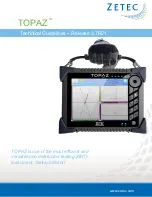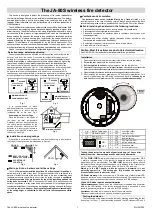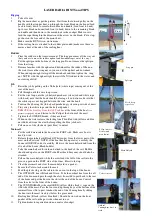
24
Table 8. Exclusion Criteria – All CentriMag System Premarket Studies
G030052/S21
G030052
G040029
FTW from CBP Pivotal Trial
Cardiogenic Shock Trial
CentriMag RVAS
Stroke, TIA or history of either condition within the last six months and/or any confirmed, existing neurologic deficits.
Active systemic infection defined as positive blood cultures, core temperature >100.5ºF, white blood count > 12,500, and
treatment with antimicrobials.
Not applied to this study
Prolonged (>15 min) or unsuccessful attempts at cardiopulmonary resuscitation
prior to initiation of the surgical procedure, or prior to initiation of CPB.
Participation in a clinical trial with
any experimental treatment within 30
days prior to screening or previous
participation in the present study.
Not applied to this study
Not applied to this study
Severe blood dyscrasia as determined
by INR >1.5, PT >16.0, PTT >45.0,
and Platelet count <50,000
unresponsive to therapy.
Other serious disease(s) limiting life
expectancy.
Cancer – unresolved malignancy
Follow-up Schedule
All patients were followed throughout their course of treatment with the CentriMag system. Patients were also assessed at the time
of discharge from the hospital, and at 30 days and 6 months after removal of the device.
Preoperatively, hemodynamic data (e.g. blood pressure, cardiac output, CVP, PAP, PCWP, LAP) and laboratory assessments (blood
chemistry, coagulations studies, hematology) were collected for each patient.
Postoperatively, the objective parameters measured during the study included survival, hemodynamic data, laboratory assessments
and adverse events.
Hemodynamic data and laboratory assessments were obtained at the following timepoints:
Baseline (prior to initiation of CentriMag system support)
4 hours after initiation of CentriMag system support
Daily during CentriMag system support (except for invasive hemodynamic monitoring which was only required for the first two
days of CentriMag system support)
Daily during the first two days after CentriMag system removal
Hospital discharge
30 days after CentriMag system removal
Survival was assessed as a percentage of patients discharged alive from the hospital, and at 30 days and 6 months after CentriMag
system removal. Adverse events and complications were recorded throughout the duration of CentriMag system support, through
device removal and until the patient was discharged from the hospital.
Clinical Endpoints
Patients enrolled in this study included those who failed-to-wean from cardiopulmonary bypass. Failure-to-wean from
cardiopulmonary bypass was defined as patients who undergo an operative procedure that are hemodynamically unstable and unable to
leave the operating room without mechanical circulatory support. A total cohort of 32 patients was enrolled in the pivotal study.
With regards to safety, the frequency of major adverse events such as neurological dysfunction, bleeding, infection, and device failure
was assessed.
Survival was the primary measure of effectiveness. Secondary measures of effectiveness included improvements in hemodynamics
and key laboratory values as measures of end organ function.
With regard to success/failure criteria, patients were considered successes if they survived to hospital discharge or 30 days after device
removal, whichever was longer. Patients were also considered successes if they survived on CentriMag system support until induction
of anesthesia for the purpose of cardiac transplantation or converting the patient to a longer-term mechanical circulatory support
device. Overall, the Pivotal FTW study was considered a success if at least 27% of the patients survived to the longer of either
hospital discharge or 30 days post device removal, based upon data from the published clinical reports of FTW patient outcomes.
Accountability of the FTW Study Cohorts
Ninety-five (95) patients were enrolled in the four clinical studies supporting this PMA as shown in the following table. One of the
studies enrolled only patients for the indication for use in this PMA, post-cardiotomy failure to wean from cardiopulmonary bypass, but
the other three enrolled patients for other indications as well. Data from patients enrolled for the other indications for use was used to
assess safety of the device. All patients enrolled in the studies were evaluated. No patients withdrew from the studies or were lost to
follow-up.
Table 9. All CentriMag Clinical Study Enrollment
Clinical Study
Indications for Use
Total Patients Enrolled
Post-cardiotomy
Failure to Wean
From CPB
Other
FTW from CPB
Pivotal Trial
(G030052/S21)
32
0
32










































